By Catherine Marshall
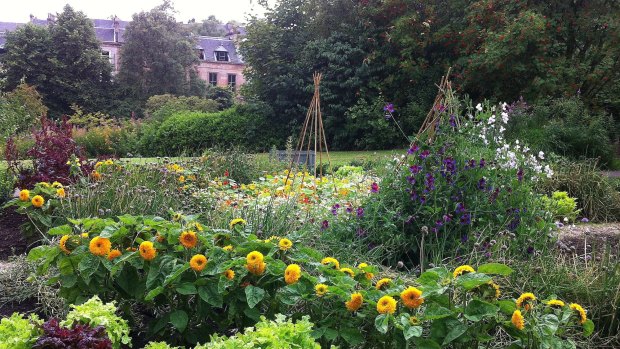
Potager garden in the Botanic Gardens.Credit: Catherine Marshall
Delicious things are emerging from the cracks in Glasgow Botanic Gardens. They're sprouting from the pathways that thread beside its rockeries and through its woodland copses. They're snaking through the gaps in wrought iron fences and creeping over the bridge that spans the serene River Kelvin. Chef Chris Charalambous crouches down beside the timeworn railings and pulls at some weeds growing from the footpath. He flicks away the soil caking their stems, pops them into his mouth, chews and swallows. "This," he says, "is bitter cress. You can use it in a salad, as a wee garnish."
We've come here by way of Cail Bruich – "eat well" in Gaelic – the award-winning, West End restaurant Charalambous runs with his brother, Paul. We've poked our heads into the gardens' ornate greenhouse, and have stopped to admire its potager garden, filled in late summer with chamomile and mulberries and companion-planted blooms. Handsome sandstone terraces poke through the curtains of foliage on the garden's edge, creating a romantic backdrop to this bucolic Scottish scene.
But we're here to forage for tasty weeds, necessary ingredients for the lunch Charalambous has promised to cook for me. And who would have known that such sustenance grew wild beneath the feet that wander through these gardens? There's chicory and wild garlic and elderberry here, and that most Scottish of plants, brambles. It's a little too late in the season for mushrooms, but in summer the chanterelles are like creamy yellow pincushions carpeting the grounds. And it's not only terrestrial plants that grace Cail Bruich's menu: down at the seafront Charalambous gathers seaweed and samphire, a kind of miniature asparagus-of-the-sea.
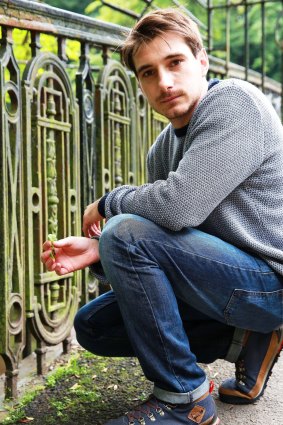
Paul Charalambous.Credit: Catherine Marshall
This desire to complement his dishes with plants growing wild and free was sparked by a visit to esteemed Danish restaurant, Noma, which is known for its use of foraged ingredients. "I just thought it would be cool to use stuff that had that connection with the land," he explains. "Why buy something when you can just pick it yourself?" And the pickings in Glasgow's Botanic Gardens are plentiful. We stop beneath a soaring old Scots pine and gather some fallen needles. Charalambous rubs them between his fingers, releasing their minty scent.
"We use the needles for infusions, for making a tea or a cream or a base for a dessert," he says. "The flavour is very intense." Further along, we come upon a Rowan tree. The berries are used to make jellies and jams which might be used on a cheese platter. You can't eat them raw, Charalambous warns; they must be cooked first. How did he determine which plants to harvest, and which to avoid, I wonder?
"Trial and error," he says. "And being shown, as well. I use The Forager Handbook a lot." With that, Charalambous plucks a leaf from a plant growing waist-high. He offers it to me: it has a mild, floral flavour. This is garlic mustard, usually withered and sparse this close to winter. "There must be a micro-climate down here," he says, incredulous.
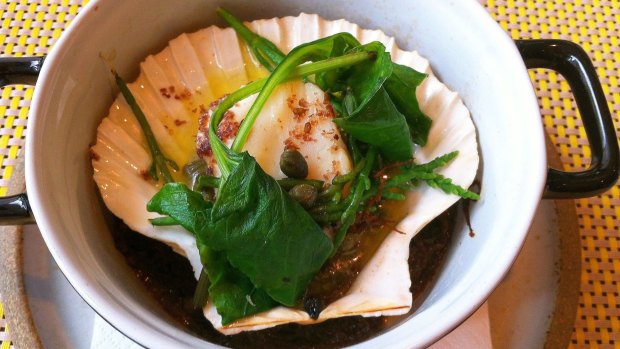
Scallops, seaweed and samphire.Credit: Catherine Marshall
The nettles, used to make soup and tea, are having an extended summer too. They grow across the river, along its northern bank. Pink purslane flourishes here, too, and rosebay willow herbs, tall bushes whose flowers are tasty and beautiful, like nasturtiums. There are vanilla-flavoured meadow sweet flowers and Himalayan balsam, which looks like an orchid. Charalambous uses them all to garnish his desserts.
The river's burble gives way to the whoosh of traffic as we approach Great Western Road. We shake ourselves from the gardens' dense foliage and emerge onto the busy pavement and into Cail Bruich, where Charalambous sets to work in the kitchen. The lunch he produces is a celebration of Scottish ingredients, both found and caught: there are scallops that have been hand-dived from Loch Fyne, lightly steamed and served with samphire and seaweed collected from the bay.
There's crown of wood pigeon served with brambles and sautéed chanterelles. And there's the grand finale, a dessert that captures perfectly those last rays of Glaswegian summer sunshine: passionfruit and raspberries and strawberries, and those purple-black brambles we collected in the Botanic Gardens.
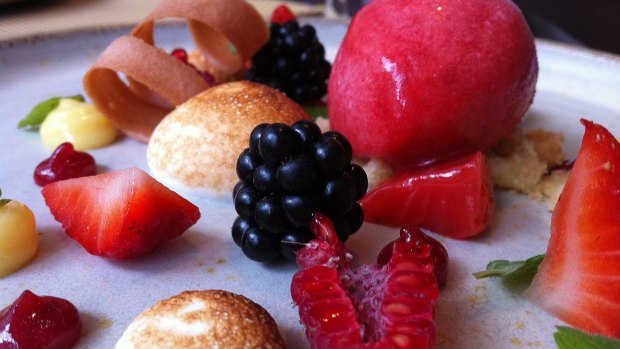
Scottish summer fruits.Credit: Catherine Marshall
"There's nothing more satisfying than picking your own dinner, you know?" Charalambous says. Except for eating it, I think. The writer was a guest of the Glasgow City Marketing Bureau and BritRail.
TRIP NOTES
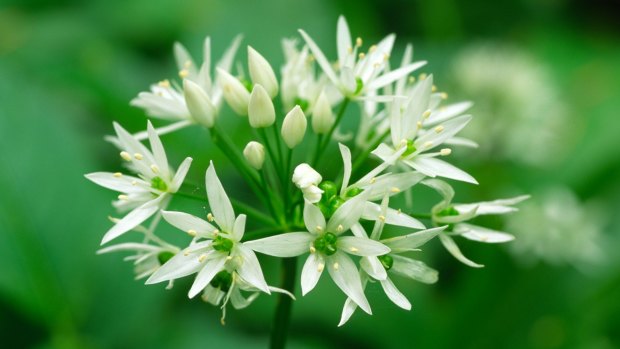
Glasgow treat: wild garlic.Credit: Alamy
GETTING THERE
British Airways flies daily from Sydney to London via Singapore, with frequent onward connections to the rest of Europe. Year-round fares start from $2377 and cabin sales occur periodically. See britishairways.com Rail Europe offers regular services between London and Glasgow. Brit Rail Passes cost from $297 for three consecutive days of travel. Alternatively, single tickets cost from $63 each. See raileurope.com.au)
EATING AND DRINKING THERE
Cail Bruich is located at 725 Great Western Road in Glasgow's West End. It is open for dinner Monday to Saturday, lunch Wednesday to Saturday and has late lunch/early dinner sittings on Sundays. Foraging tours can be organised by request. See cailbruich.co.uk.
Sign up for the Traveller Deals newsletter
Get exclusive travel deals delivered straight to your inbox. Sign up now.